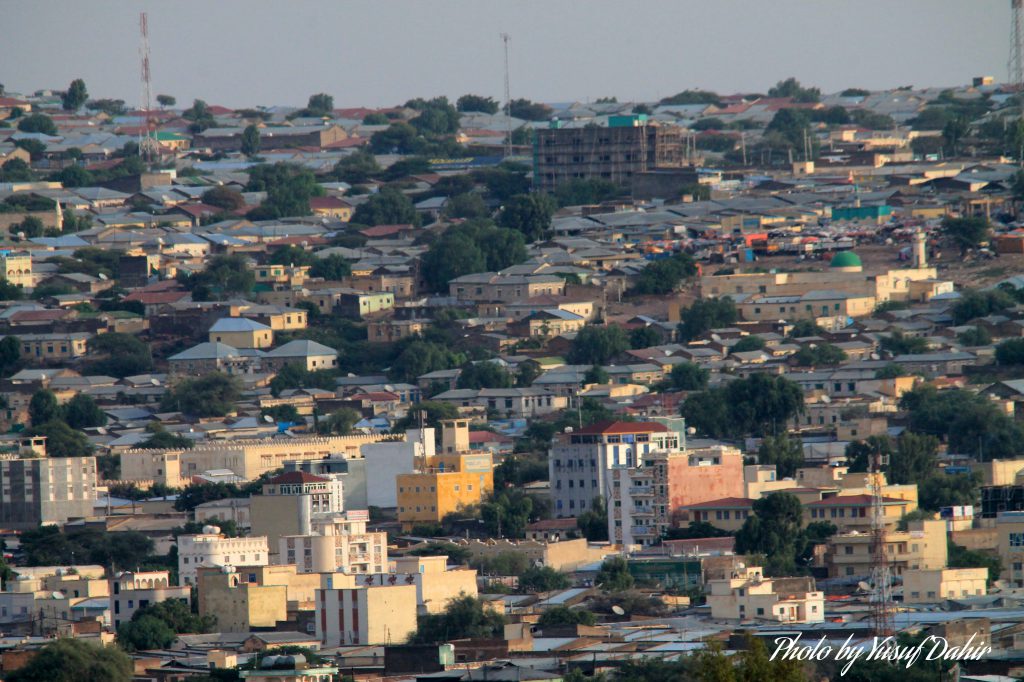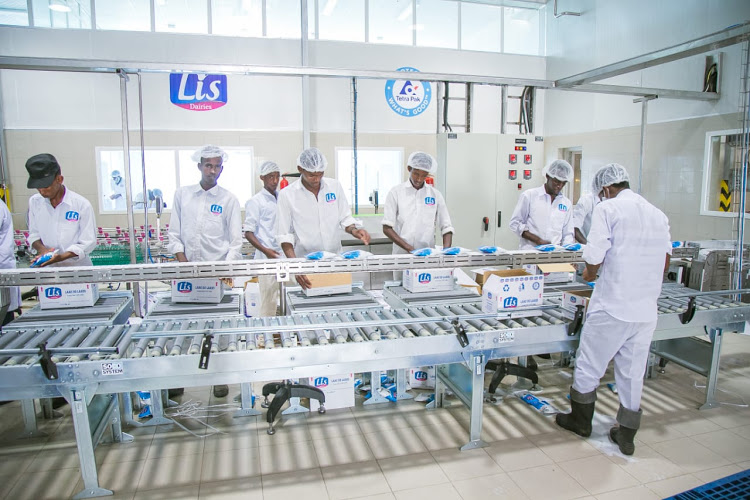
Somaliland Central
What you need to know about Somaliland's SovereigntySomaliland Industry


ECONOMIC PILLAR
The Economic Pillar consists of nine sectors. These are Macro-Economy & Finance, Planning, Agriculture, Livestock, Fisheries, Industry (including Commerce and Tourism), Mining, Private Sector, and the Diaspora.
Agricultural Sector
In order to accelerate the development of the agricultural sector, the following five broad priority areas will be the focus of the National Development Plan:
(i) Building the institutional capacity of MoA, (ii) Establishing research centres, (iii) Developing training and extension programs, (iv) Improving agricultural support services, (v) Promoting sustainable agricultural and land management methods, (vi) Promoting commercial farming, and (vii) Improving the coordination of the sector programs and activities.
Livestock Sector
The strategies pursued by the National Development Plan for the livestock sector seek to tackle the main obstacles hampering its development. In line with this, the priority areas for intervention and investment in the next five years will include:
Fishery Sector
The private sector is expected to take the lead in the development of the sector, but the government will be actively involved in providing leadership, promoting the sector, investing in infra-structure, and developing the right policy and regulatory framework. The main priorities and strategies for the sector can be summarized as:
(i) Developing appropriate fisheries policies and regulations for the industry, (ii) Strengthening the institutional capacity of the Ministry of fisheries, (iii) Establishing cold chain facilities from producing ports to consuming markets, (vi) Building fish markets in the main urban centres to promote consumption, (v) Setting up training and research facilities, (vi) Promoting fish exports to key importing markets, (vii) Supporting and promoting the fish processing and canning industry, (viii) Promoting fish farming and aqua culture, (ix) Rehabilitating local fishing ports, (x) Establishing marine sanctuaries and fish restocking programs.
Industry, Commerce and Tourism Sector
The NDP aims at achieving sustainable growth in Job creation opportunities and Exports. This will be driven by an ambitious, public investment programme which will systematically reduce the operational cost of doing business in Somaliland, raising productivity, and developing a vibrant Financial Sector. This means heavy investment in “hard infrastructure” by the SLG which is a key factor in attracting private investment. The main programs and projects to be implemented within the Industry, Commerce and Tourism sector under the current NDP include:
(i) Building the capacities of Ministry of Industry, Commerce and Tourism (MoICT), (ii) Formulating business laws and policies that are competitive and meet international standards, (iii) Improving access of local produce to international markets, (iv) Encouraging investment in manufacturing, (v) Rehabilitating the cement factory, and (vi)Promoting tourism.
The Mining Sector
Mining is very much underdeveloped in Somaliland; but has the potential to be the driving force behind rapid economic development. The priority areas of the sector include:
(i) Extraction and development of the country’s large coal deposits, (ii) Revising and updating the mining code, (iii) Carrying out a comprehensive cartographic and seismic survey of the country, (iv) Establishment of a modern national laboratory, and (v) Building the capacity of the Ministry of Mining, Energy and Water Resources.
Private Sector
The private sector is very important accounting for over 90% of the GDP. Somalilanders are generally very enterprising people. Urban centred commercial business has experienced phenomenal growth in the last twenty years, yet the sector faces serious obstacles to realizing its potential growth. The government is committed to improving the business climate and creating an environment that is conducive to the sector’s development by:
(i) Providing tax incentives to foreign investors, (ii) Streamlining business registration and formation processes, (iii) Proving the regulatory framework required for the development of a strong financial sector, (iii) Encouraging the manufacturing sector with tax concessions, providing technical support and the establishing industrial zones, (iv) Introducing credit schemes and support services for start-ups and small businesses, (v) Developing free trade zones, (vi) Improving infrastructure, (vii) Supporting the chamber of commerce and other business associations, (viii) Expanding the market for domestic products through trade agreements and customs union with neighbouring countries, (ix) promoting exports, (x) providing training and advisory services to private businesses, and (xi) strengthening peace, law and order.
The Diaspora
The Somaliland Diaspora is an important resource for the country contributing to its social, economic, technological and political development. The Diaspora remits to the country up to $400 million a year, and there are large numbers of Diaspora professionals and entrepreneurs already in the country creating employment and sharing their expertise. However, there are still challenges in the way of maximizing Diaspora contribution. The government has recognized that and established a special commission for the Diaspora. To further facilitate the flow of Diaspora capital and know-how, the government will encourage Diaspora engagement by:
Establishing National Diaspora development trust fund, (ii) Developing Private investment funds that target the Diaspora, (iii) offering special tax-exempt savings accounts for the Diaspora, (iv) Supporting Diaspora community development organizations, (v) Initiating Diaspora youth and professionals’ volunteers exchange and placement schemes, and (vi) Promoting Diaspora cultural tourism.
Background to the Somaliland Private Sector:
The Somaliland economy is driven by the private sector. Unlike most other economies in the world, the government footprint is limited, amounting to under 10 percent of the gross domestic product (GDP).
The Setting
Somaliland’s private sector has thrived in many ways since Somalilanders charted a path out of the destruction inflicted on the region during the Siad Barre regime. The extent of its revival since 1991 is a testament to the Somaliland people and their entrepreneurial and business culture.The private sector, part of a broad set of businesses anchored in the agro-pastoral, telecommunications, trading,
and financial/remittance sectors but also in provision of social services, has rightly been acknowledged for its resilience and contribution to an economy and people that experienced massive dislocation and privation prior to the fall of the Siad Barre regime in 1991. By then, the capital city of Hargeisa had largely been reduced to rubble, with an estimated 70 percent of the city destroyed, some 50,000 people killed, and close to 1 million people exodus to Ethiopia.
Remittances
Large remittance inflows to Somaliland help families pay for food, education, and health services. They support small and medium-sized enterprise (SME) development, also connecting entrepreneurs in Somaliland with business partners from among the diaspora. Remittances also have major macroeconomic implications, financing imports and underpinning the local money supply. Somaliland diaspora accounts between 800.000 to 1.9 million worldwide. However, remittance estimates range from US$500–$900 million per year.
The future opportunities are as follows:
- New sources of revenues. The possibility of windfall profits from any combination of the new economies that could emerge in Somaliland—oil, other extractive industries, expanded trade with Ethiopia, sectors making use of the fibre-optic cable—constitute a historic, unprecedented opportunity for transformational growth and development.
- Market position. Somaliland’s geographic position plays to its favour in multiple directions. Berbera is well-placed to serve shipping though the Red Sea and enjoys excellent access to the booming economies of South Asia, the affluent economies of the Gulf states, and the emerging economy of Ethiopia.
- Direct foreign investment (DFI). Global investment capital has increasingly looked to Africa—or parts of Africa—as the most promising site for high returns on investment. While Somaliland remains high risk, the recent flow of DFI is promising and could constitute the beginning of more outside investment
in the economy.
- Diaspora. Somaliland enjoys an exceptional advantage with its large, committed, and increasingly well-established diaspora. Its mature diaspora has acquired new skill sets and capital abroad and is ready to harness both if conditions appear favourable.
- Public opinion. Somaliland possesses an invaluable asset in its vibrant democracy and open society, where civil society can be mobilized and political leaders must be mindful of the public’s views. The government should ensure that this civil society is fully informed of the unprecedented new economic opportunities that could present themselves in Somaliland. The public are an essential partner if the government are to be able to implement the reforms that will ensure these opportunities serve the wider public interest.
Choices for the Future
The economy Somaliland is at a crossroad. It requires a step-change towards more formal economic governance arrangements in some of its key sectors.
- Financial Sector: First and foremost, and over the short term, Somaliland needs to get its financial sector into better shape. This is the lifeblood of the economy. The government should pursue and conclude decisively on its current ongoing debate as to the nature of this sector and whether it is to be a solely Islamic financial system or alternatively a dual system. Once this decision is
made, the government should move purposefully to amend and introduce the necessary legislation so that an effective regulatory system can be operationalized and this absolutely key sector can provide the inclusive services that the economy so desperately needs.
- Enterprise Sector: In the short term, facilitate formalization and new business entry and target services to those businesses with near-term employment and growth potential, including firms with a track record for innovation and female-headed businesses.
- Government Sector: Ensure that capacity building and investment in government and other public agencies
Somaliland Challenge Economy
Lack of Accessibility to debt
Somaliland can’t borrow a loan from the international tribunals, this has thwarted the economic development of the country, as it can only use its income to regulate the economy of Somaliland, though, unrecognized it’s the only country in the world which has zero debt whether its’ from the international tribunals, domestic borrowing as well as the offshore lenders.
Somaliland’s economy remains highly dollarized, leaving the central bank with no capacity to manage the national currency.
All major transactions in Somaliland are undertaken in US dollars, the monetary authorities can’t directly affect the volume of the foreign currency in circulation, if there is little or no bank credit outstanding, they cannot influence interest rates which affect the money supply by changing bank reserve requirements.
High cost of lighting and energy
Energy plays a fundamental role in the economic growth process; Stern (2010) argues that energy plays an important role in economic growth as production should be seen as a function of capital, labour and energy. Traditionally it is only seen as a function of capital and labour. However, energy is required to power industrial processes and to produce goods, equipment and services in the majority of productive sectors within an economy. The provision of energy is also strongly associated with improved human development (Bergasse et al., 2013) Atif & Siddiqi (2010) examine the link between electricity consumption and GDP, the study finds that an increase in the use of electricity leads to an increase in economic growth. Therefore, the research suggests that the slowdown in electricity consumption within the country has hindered economic growth and the study finds that there is no long-term link from energy consumption to GDP but there are some significant short-term links from energy consumption to GDP. There are also long-term links from GDP growth to energy consumption.
Economy highly dependent on imports
Somaliland’s GDP for 2012 is estimated to have been $1.4 billion (current US$ prices)[1], with GDP per capita estimated at $347.Almost 30% of GDP is derived from the livestock industry followed by 20% from wholesale and retail trade (including the informal sector); 8% from crops and 6% from real estate activities. In 2012, Somaliland’s trade deficit was approximately $496 million, which was financed through a combination of remittances and external aid.





